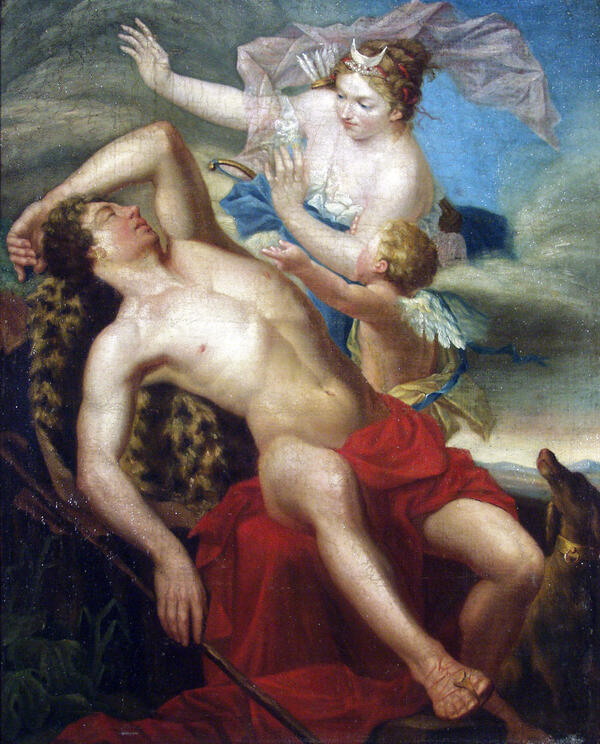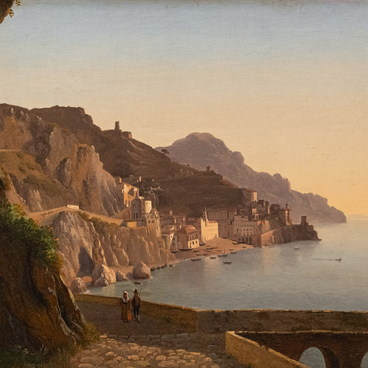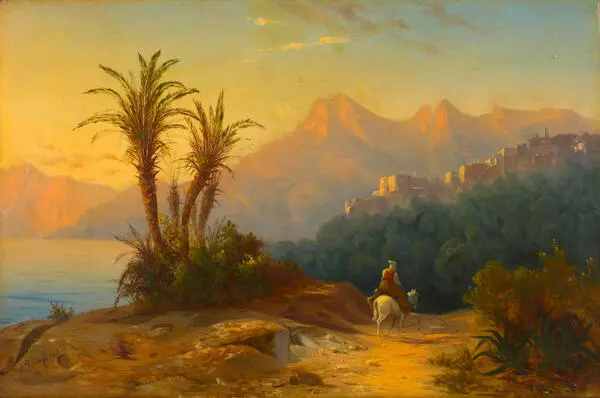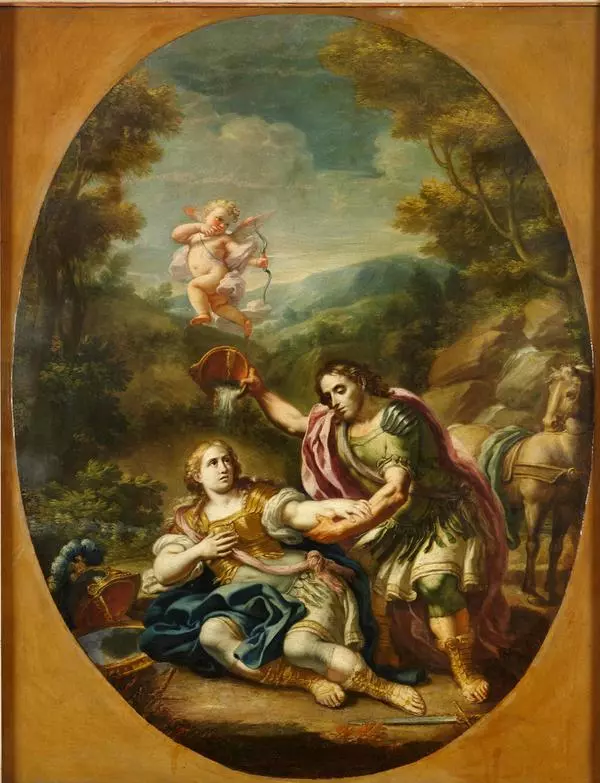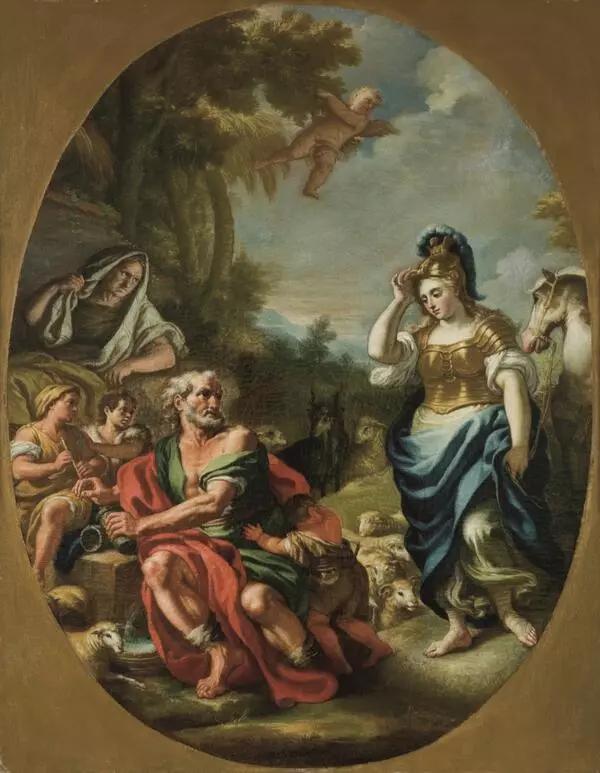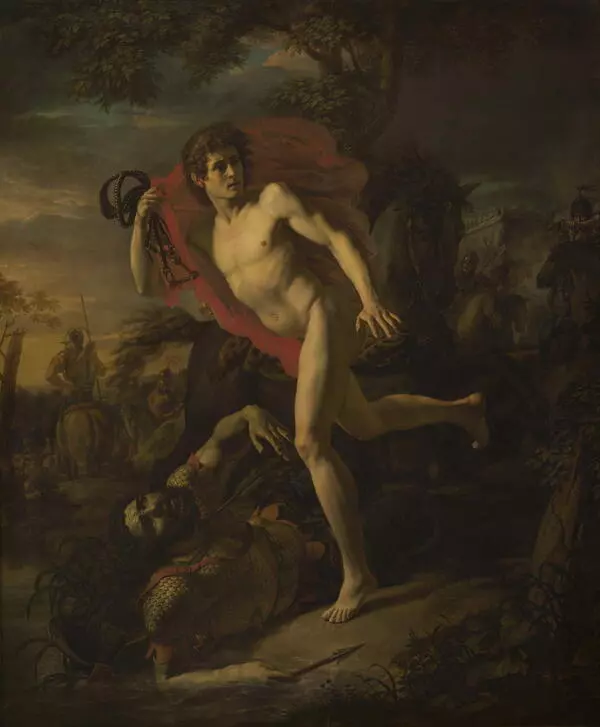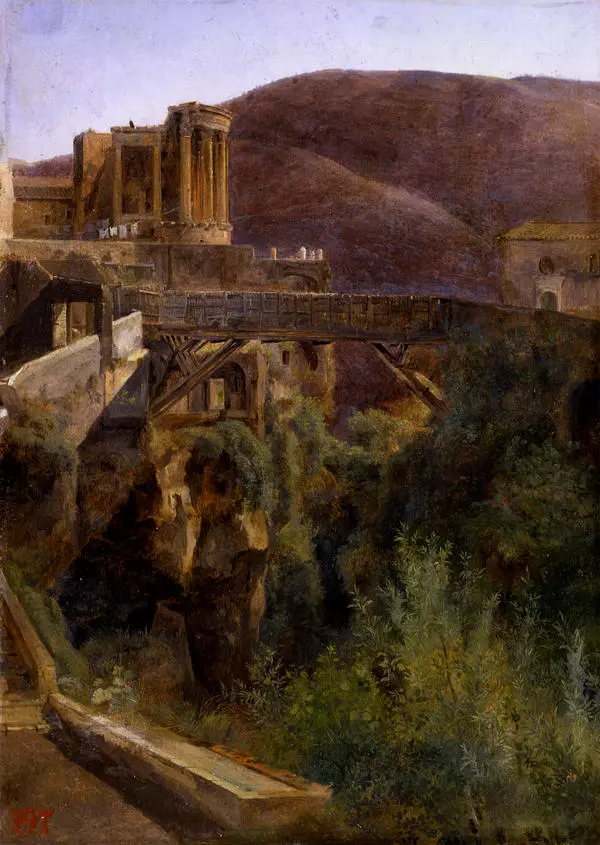This painting was created by Andrei Ivanovich Ivanov. He studied at the Imperial Academy of Arts under the guidance of the artist Grigory Ivanovich Ugryumov and the French history painter of the Rococo style Gabriel François Doyen.
In 1797, for his painting “Noah Making a Sacrifice to God after Leaving the Ark”, Andrei Ivanov received a Grand Gold Medal and the title of class artist of the first degree. For his achievements, he was awarded a pension by the Academy of Arts.
Later, Andrei Ivanov started teaching at the Academy. In 1800, he received the title “appointed academician”, which was awarded by the Imperial Academy of Arts to artists whose nomination had been approved by the Academy Council.
In 1803, Andrei Ivanov became an academician of painting for his work “Adam and Eve with Children under a Tree after Being Banished from the Garden of Eden”. In 1812, he received the title of professor for his painting “Prince Mstislav the Daring Fighting Prince Rededya of Kassogia”. In 1821, he was awarded the title of senior professor. However, at the end of 1830, Andrei Ivanov was dismissed from the Academy of Arts upon a personal order of Nicholas I. The emperor was dissatisfied with Ivanov’s painting “The Death of General Kulnev”.
“Selene and Endymion” is based on a Greek myth about the love of Selene, the goddess of the Moon who was often identified with Artemis and Hecate in post-classical times, for the young Endymion. He was punished by Zeus for daring to show romantic interest in Hera and put into eternal sleep. Selene asked Zeus to grant Endymion eternal youth. According to another version of this myth, Selene herself put Endymion into sleep.
This is one of Andrei Ivanov’s earliest works, created
during the development of the historical genre. Back then, the future professor
of the Academy of Arts and Russian history painter was transforming a specific
scene into an idealized image. The figures are still — like sculptures; their
dynamics are limited to the mutual positioning and the spatial composition to a
relief. Despite this, the physicality of male and female figures is preserved.
The classical diagonal composition of three different-sized figures and the
harmony of all elements are enhanced by the Baroque opulence of bodies and
drapery, which take up most of the space.

